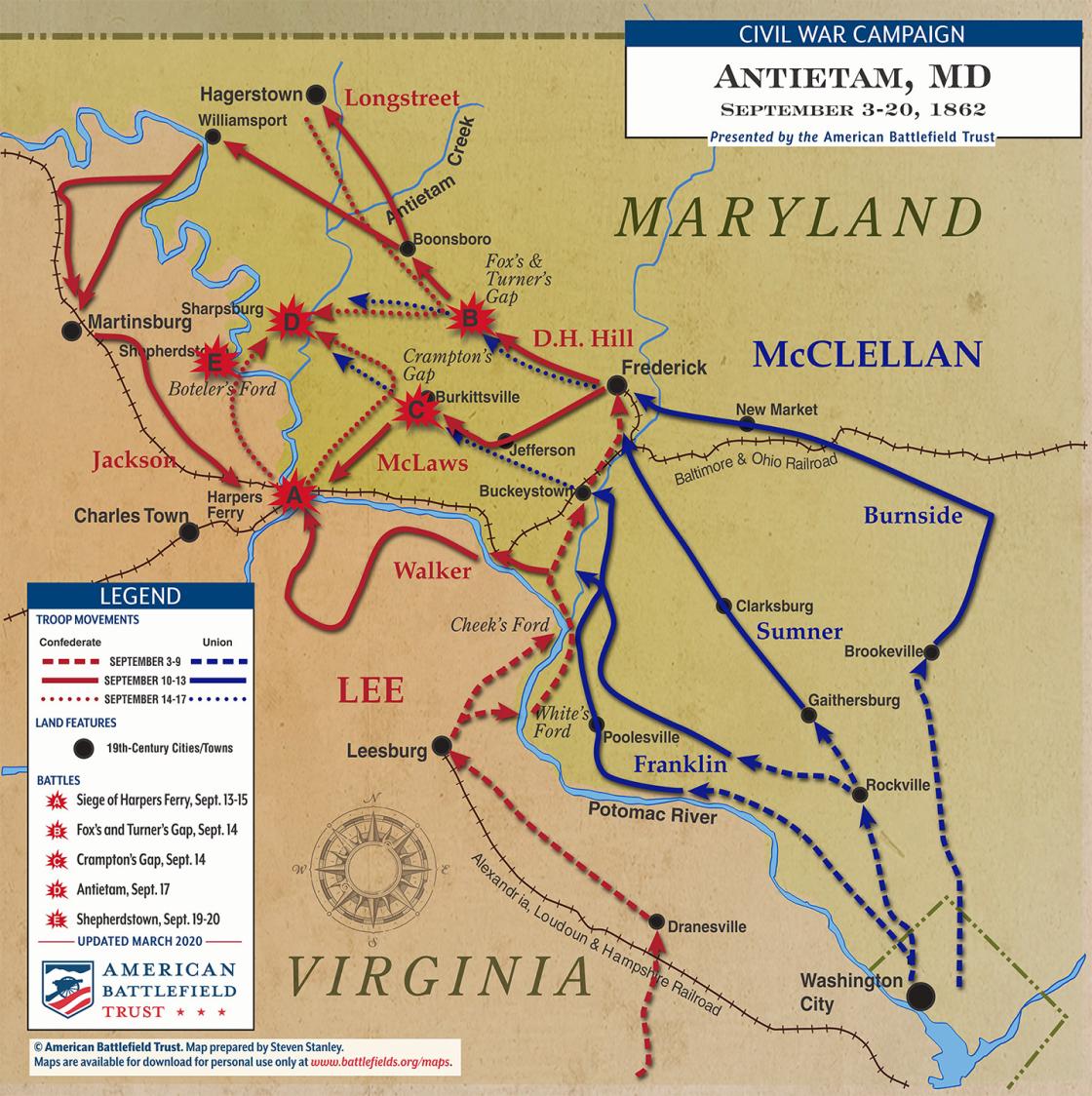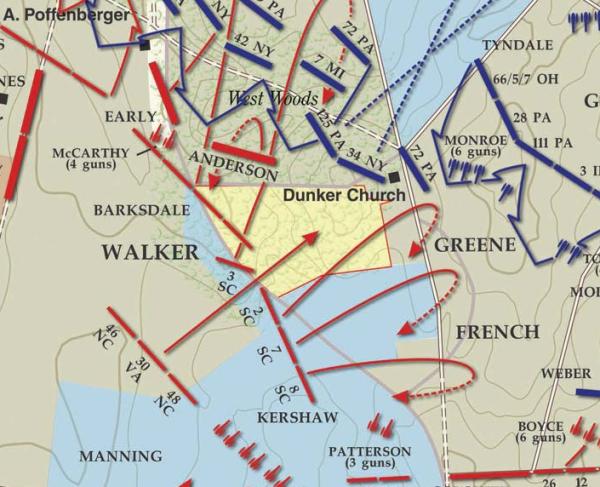Maryland Campaign 1862
American Battlefield Trust's map of the Maryland Campaign
In early September 1862, Confederate Gen. Robert E. Lee brought the war to Northern soil. Lee boldly divided his numerically inferior force to strike simultaneously into western Maryland while seizing the Federal garrisons at Martinsburg and Harpers Ferry. General Thomas J. “Stonewall” Jackson with Generals John G. Walker and Lafayette McLaws was tasked with capturing the Union troops south of the Potomac, while D. H. Hill defended South Mountain and James Longstreet moved west. Maj. Gen. George McClellan’s army marched out of Washington in three columns (or wings), defending the Baltimore and Ohio Railroad as it moved towards Lee. Unaware of Lee’s objectives, fortune favored McClellan when a mislaid copy of the Confederate plans (Special Order No. 191) fell into his hands. Now aware that Lee's forces were divided, McClellan moved against Hill on South Mountain at Fox’s, Turner’s and Crampton’s Gaps on September 14. Defeated there, Lee planned to return to Virginia until he learned from Jackson that Harper’s Ferry would surrender on September 15. Deciding to fight, Lee pulled back to Sharpsburg, Maryland, behind Antietam Creek, where McClellan attacked him late on the 16th. The next day was the bloodiest day of the war, with no clear victor on either side. Lee, however, withdrew across the Potomac at Shepherdstown on September 19 where his rearguard was attacked across Boteler’s Ford. Lee abandoned his invasion of Maryland, and the strategic Union victory gave Lincoln the political clout needed to issue the preliminary Emancipation Proclamation on September 22.



